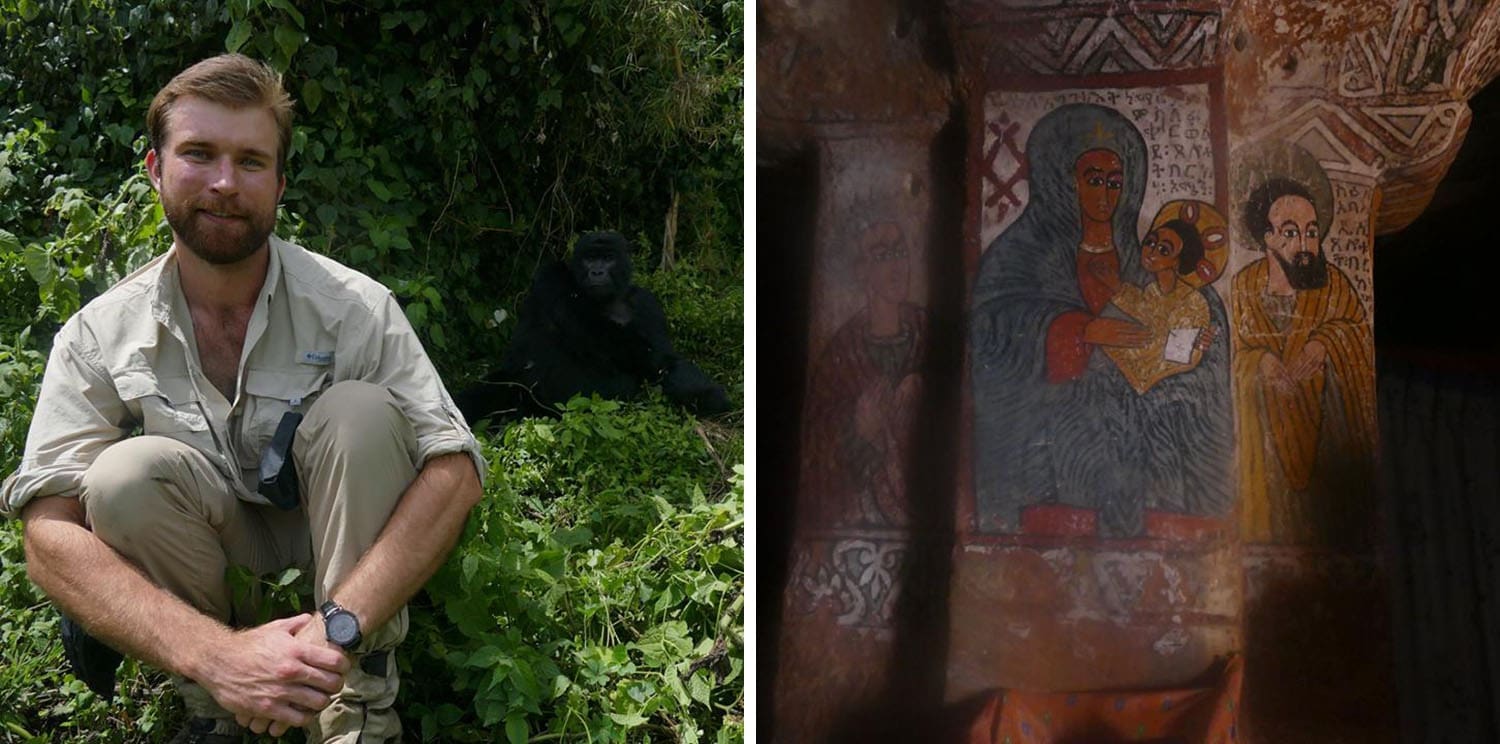Remarkable Rwanda and Incredible Ethiopia by Miles Nolting

Remarkable Rwanda
Appropriately called “The Country of a Thousand Hills,” Rwanda is predominantly grassy uplands and hills. I share some highlights of my ten days in country.
Akagera – I took a direct flight from Addis to Kigali and connected on a three hour road transfer through to Akagera National Park. This park is certainly off the beaten track. Unlike Volcanoes and Nyungwe National Parks, Akagera National Park is not known for its primates. Instead, it offers the more traditional game-viewing experience in the quintessential savannah and wetlands milieus. Within the last 5 years, the African Parks network has successfully reintroduced both lion and black rhinoceros; though I wasn’t able to do so, it is now possible to view the “Big 5” in Rwanda! Ruzizi Tented Lodge and Magashi Camp (it’s conservancy is well-known for its leopard) were the two accommodations.

Nyungwe Forest – The winding, undulating roads through the forest-covered trees of Nyungwe National Park foreshadowed my arduous chimpanzee trek. A 4 am wake-up call starts a half-day excursion that challenges, but not insurmountably so. After hours of navigating newly-cut pathways, spotting a solitary male walking along the same path i had walked along moments earlier made it all worthwhile. And of course, a massage at Nyungwe House’s spa ensured that I would not be carrying my aches with me to Volcanoes National Park for my gorilla treks! One&Only Nyungwe House (an absolutely gorgeous lodge) and Nyungwe Top View Hotel were my accommodations.


Volcanoes National Park – One of the most striking aspects of both Nyungwe and Volcanoes National Parks is their proximity to tea plantations for the former and subsistence farms to the latter. It’s yet another reminder that national parks can only succeed if conservationists can meaningfully collaborate with locals. For Volcanoes, all that divides the park from the littany of potato farms is a basic stone wall. Beyond that wall lie some of the most incredible creatures I have ever encountered: mountain gorillas. On two separate days, I had a chance to visit two separate families, each with their own dynamics and idiosyncrasies. These gorillas were completely at peace in our presence, allowing me to approach (and be approached) as close as an arms-length away! The Bishops House, Bisate Lodge and Sabyinyo Silverback Lodge were the accommodations.








Incredible Ethiopia
After a 2-week trip to the culturally and historically varied and fascinating country of Ethiopia, I’d like to share some highlights.
Gondar – The highlight of my afternoon exploring the former Ethiopian Empire capital of Gondar was Fasil Ghebbi. This royal enclosure contains several castles constructed by successive emperors of the Solomonic Dynasty during the 17th century. As someone who has had the opportunity to view castles from varying eras and places, it was very exciting to see a unique fusion of Portuguese and Ethiopian architectural styles.

Simien Mountains – After visiting Gondar, I was transferred in a 4×4 to the Simien Mountains National Park. This place certainly deserves its designation as a UNESCO World Heritage Site. You truly feel like you are on the “roof of Africa,” standing on its edge, looking down to the valley floor below. But the Gelada baboons don’t mind: by day they graze, by night they scurry down seemingly inaccessible parts of the cliff face to avoid hyenas and leopards. Simien Lodge was accommodation; consider staying at Limalimo Lodge as well!

Lalibela – I left very early the following morning in order to catch an early flight to the illustrious Lalibela. When people remark about Ethiopia’s historical nature, this is often the first place they envision. And for good reason: their medieval rock-hewn churches are unlike anything else in the world. These were made by “monk-kings,” and as a result, they feel much more intimate than the contemporaneous Gothic cathedrals of Europe. And like the castles in Gondar, they were all clustered within walking distance, allowing one to explore all of them within in a day, even as the throngs of pilgrims were present for Gena (Ethiopian Christmas). Mezena Lodge was accommodation.

Aksum – After two nights, I proceeded to Aksum (Axum) in the northern extreme of the country. This is the cradle of Ethiopian civilization. The kingdom of Aksum predates Christianity, although it was during its existence that Christianity arrived in Ethiopia. This is also the supposed location of the Ark of the Covenant; as a result, every church in Ethiopia is required, by tradition, to possess a replica of the Ark of the Covenant. Sabean Hotel was accommodation.
Tigray – This next region has not typically been on our Ethiopian itineraries. However, for a variety of reasons, I was convinced to visit the Tigray region. Imagine a landscape akin to the American southwest, but with a monastery or church perched on top of some of the mesas. Half of the joy I experienced visiting these places was the journey itself. For some of the churches I had to scale a cliff face with a harness! Abune Yimata stood out particularly: I found no better example of Ethiopian frescoes anywhere else. Accommodation was Gheralta Lodge (my personal favorite in Ethiopia) and Wukro Lodge.


Omo River Valley – My final region to visit was the Omo River Valley, home to several very different tribes including the Karl, Namatong, Hamer, the Dassenech, and the Mursi. The best way to experience the area is at Lale’s Camp as it is the only camp using boats that allow access to the more remote and less visited tribes.

Addis Ababa – Anthropologists believe that East Africa’s Great Rift Valley is the site of the origin of humankind. “Lucy” lived more than three million years ago, and her bones now rest in the Ethiopian National Museum.


